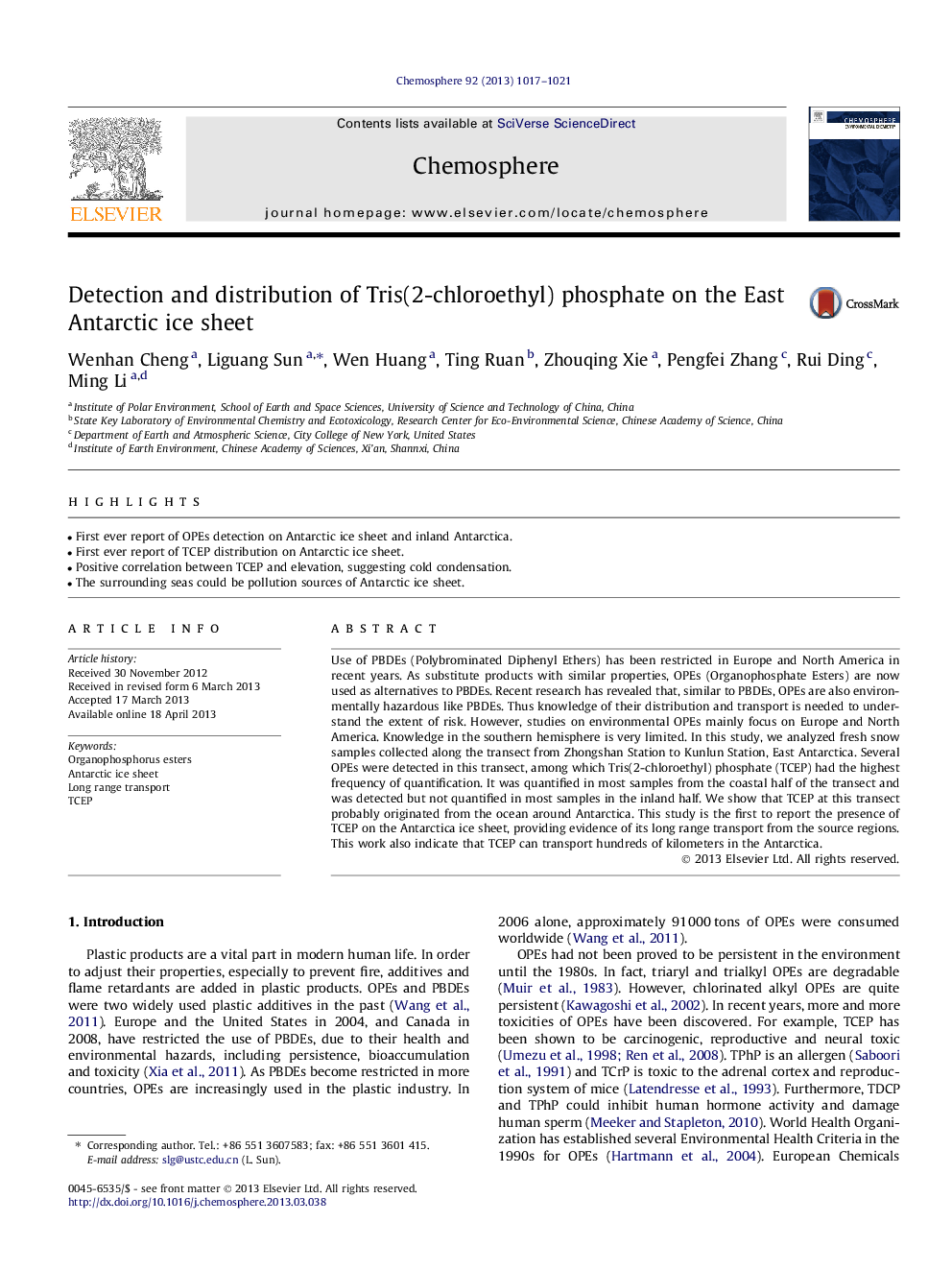| Article ID | Journal | Published Year | Pages | File Type |
|---|---|---|---|---|
| 6310028 | Chemosphere | 2013 | 5 Pages |
Abstract
Use of PBDEs (Polybrominated Diphenyl Ethers) has been restricted in Europe and North America in recent years. As substitute products with similar properties, OPEs (Organophosphate Esters) are now used as alternatives to PBDEs. Recent research has revealed that, similar to PBDEs, OPEs are also environmentally hazardous like PBDEs. Thus knowledge of their distribution and transport is needed to understand the extent of risk. However, studies on environmental OPEs mainly focus on Europe and North America. Knowledge in the southern hemisphere is very limited. In this study, we analyzed fresh snow samples collected along the transect from Zhongshan Station to Kunlun Station, East Antarctica. Several OPEs were detected in this transect, among which Tris(2-chloroethyl) phosphate (TCEP) had the highest frequency of quantification. It was quantified in most samples from the coastal half of the transect and was detected but not quantified in most samples in the inland half. We show that TCEP at this transect probably originated from the ocean around Antarctica. This study is the first to report the presence of TCEP on the Antarctica ice sheet, providing evidence of its long range transport from the source regions. This work also indicate that TCEP can transport hundreds of kilometers in the Antarctica.
Related Topics
Life Sciences
Environmental Science
Environmental Chemistry
Authors
Wenhan Cheng, Liguang Sun, Wen Huang, Ting Ruan, Zhouqing Xie, Pengfei Zhang, Rui Ding, Ming Li,
